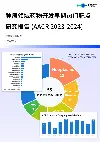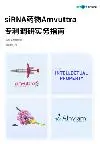U.S. Personal Emergency Response Systems (PERS) Market Analysis 2022-2027: Introduction of Voice-Based and Mobile Medical Alert Systems & High Adoption of Smartphone Applications Among Geriatrics
2022-07-27
DUBLIN, July 27, 2022 /PRNewswire/ -- The "U.S. Personal Emergency Response Systems (PERS) Market - Industry Outlook & Forecast 2022-2027" report has been added to
ResearchAndMarkets.com's offering.
The growing integration between wearable medical devices and medical alert systems like PERS and healthcare facilities will enable remote access to patient data and offer essential home healthcare services and improve patient safety and health outcomes. The demand for such integrated wearable devices has gained more importance after the onset of the COVID-19 pandemic. They offer patients, especially elderly ones, safer, more accessible options for routine, preventive, and chronic care.
The Mobile personal emergency response systems segment is the major revenue contributor and fastest-growing segment compared to in-home PER systems. Personal response systems are no longer used just within the boundaries of homes with constant advances in the mPERS technology. Depending on the design and monitoring options, one can obtain assistance on vacation, while running chores, or outside the primary residence. An mPERS ensures that users can always call for help from their medical alert system, whether at home or away.
Mobile systems use GPS technology to pinpoint the user's exact location and cellular technology to connect to a response center. In-home PER systems are for people who rarely leave the house. These systems are either connected to a landline or a cellular connection. They are majorly used by older people who are mostly bed-ridden or do not have an active life. Seniors, especially those above 80 years of age, will likely face more hurdles sustaining their independence. Reduced mobility and other factors due to aging make daily lives for older people difficult, and the dangers of not being able to get immediate medical help during emergencies are serious.
Among all end-users, the home care agencies segment accounted for a major share of around 31% in 2021 in the U.S. Homecare agencies are licensed businesses that employ caregivers to offer in-home care to the person requiring care. Homecare agencies can extend a senior's ability to live independently and make aging in place a possible alternative during every stage of the aging process. Homecare agencies use PERSs to assist their patients better. PERS and GPS systems are widely used to prevent serious long-term effects of falls or medical emergencies. Fall injuries are common among the elderly population and patients with chronic diseases. However, the direct-to-consumer segment is likely to grow at a faster CAGR of around 10% during the forecast period.
According to the United Nations Department of Economic and Social Affairs, the elderly population is expected to reach 80 million by 2040, which makes broader availability of target customers for PERS. Due to this, the U.S. encourages the development of dedicated home healthcare services to enable older adults to continue living in their homes, escalating the demand for medical alert systems in the country.
Introduction of Voice-Based and Mobile Medical Alert Systems
The PERS technology was first introduced with an in-home medical alert system, where older adults could only receive emergency help and protection within their homes through a landline-based phone. Since then, PERS firms have extended their product lines to incorporate cellular-based systems that require no phone lines. This led to the introduction of a new segment known as mPERS.
With the push of a button, most commonly worn around one's neck as a pendant or on one's wrist as a bracelet, the user can connect with an emergency operator who can dispatch help to the user's exact location; this is enabled by built-in GPS and Wi-Fi location detection. Some PERS products detect falls and trigger calls for support even when users' cannot press the medical alert button
mPERSs include various devices, from watches and pendants to mobile phones. The easy-to-use SOS button on these devices makes them unique and easy to use. Some mPERS devices also have fall detection capabilities that automatically trigger a call for help
High Adoption of Smartphone Applications Among the Geriatric Population
Although older adults have a relatively lower rate of technology adoption than younger people, they are currently more digitally connected than five years before. A selected group of older adults who are more affluent and highly educated uses various smartphone technologies and e-health platforms.
Mobile healthcare has advanced to providing health services to users through phone calls with healthcare experts. In the U.S., it is estimated that the percentage share of people 65 years and above are likely to double by 2050. According to the CDC, around 36 million falls are reported every year in the U.S. Out of 36 million falls, approximately 20% will cause broken bones, head injuries, or other trauma.
According to AARP, older people have increasingly accepted smartphones, mHealth technologies, and wearable medical devices over the past five years. People among the elderly who are socially isolated or have chronic diseases are at risk of accidents and are prone to fall sick often. Thus, an active healthcare management sector is imperative in the U.S.
Smartphone technologies can assist older adults in their daily lives. Software in the form of an application can turn smartphones into an effective PERS, which can be upgraded with additional application-based features, paired with a Bluetooth alert button, or eventually replaced with a newer model.
U.S. Personal Emergency Response Systems (PERS) Market Scenario
The U.S. PERS market is expected to grow at a higher single-digit CAGR during the forecast period. The major factors propelling the market's growth are increased awareness of PERSs in the country, the prevalence of chronic diseases, and the risk of fall injuries. Other factors such as the adoption of smart, wearable devices for monitoring health, the rise in the geriatric population living independently, favorable healthcare reforms, and financial assistance for older adults also contribute to the growth of the overall PERS market. However, the high cost of PERS and growing data breach concerns restrict the market's growth.
This rise in the adoption of smartphones has led to the growth of the market. The wearable health device industry has also grown in recent years, and this trend is anticipated to continue in the upcoming years. Furthermore, technological advances in wearables may help patients adopt medical systems in the future. With the rapid growth in the elderly population, there is a rise in the demand for medical alert systems. PERS are extensively adopted and used throughout most western countries. Consequently, with the help of PERS, the elderly can age in the comfort of their own homes, and therefore, this factor is expected to propel the market's growth.
The revolution brought by advanced technological platforms like the Internet of Things (IoT) and artificial intelligence has provided significant opportunities to the vendors in the U.S. Personal emergency response systems market. Especially, AI-driven PERS and predictive analytics help in automatic fall detection and wanderer control of users and provide timely notification to caregivers and healthcare professionals. The personal emergency response systems market is witnessing a trend with the new technology replacing the traditional medical alert systems. Mobile-based PERSs are likely to dominate the overall medical alert systems market as the penetration of smartphones is very high in the U.S. among older adults.
Market Opportunities & Trends
Introduction of Voice-Based and Mobile Medical Alert Systems
Adoption of Smartphone Applications Among the Geriatric Population
Growth in Number of Assisted Living Centers and Retirement Homes
Revolution Brought by Emerging Technologies, Such as IoT & Ai
Transformation of the Healthcare Sector
Market Growth Enablers
Rise in Awareness of PERSs Among the Geriatric Population
Increase in Prevalence of Chronic Diseases and Rise in Number of Injuries
Favorable Healthcare Reforms and Financial Assistance for Senior Citizens by the Government
Increase in the Adoption of Smart, Wearable Devices for Health Monitoring
Growth in the Geriatric Population Living Independently
Market Restraints
High Costs Associated With PERSs and Limited Technology Literacy
Growth in Data Breach and Data Security Concerns
Increase in the Number of Alternatives
Connect America
VRI
Other Prominent Vendors
Cisco Systems
Freeus
HandsFree Health
LifeFone Medical Alert Services
MedGuard Alert Inc.
Norton Control
One Call Alert
Lively
QMedic
ResponseNow
Visonic
For more information about this report visit https://www.researchandmarkets.com/r/9e3gde
Media Contact:
Research and Markets
Laura Wood, Senior Manager
[email protected]
For E.S.T Office Hours Call +1-917-300-0470
For U.S./CAN Toll Free Call +1-800-526-8630
For GMT Office Hours Call +353-1-416-8900
U.S. Fax: 646-607-1907
Fax (outside U.S.): +353-1-481-1716
Logo: https://mma.prnewswire.com/media/539438/Research_and_Markets_Logo.jpg
更多内容,请访问原始网站
文中所述内容并不反映新药情报库及其所属公司任何意见及观点,如有版权侵扰或错误之处,请及时联系我们,我们会在24小时内配合处理。
靶点
-药物
-热门报告
立即开始免费试用!
智慧芽新药情报库是智慧芽专为生命科学人士构建的基于AI的创新药情报平台,助您全方位提升您的研发与决策效率。
立即开始数据试用!
智慧芽新药库数据也通过智慧芽数据服务平台,以API或者数据包形式对外开放,助您更加充分利用智慧芽新药情报信息。




